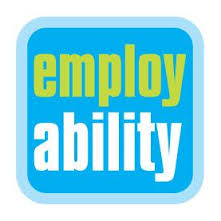To continue on with my post on getting level during divorce, I’m offering working definitions of 3 of my favorite ability descriptors which are:
Employability, Hireability and Placeability
![]()
Although my vocational assessment and evaluation assignments span a variety of jurisdictions and are designed to meet referral needs, the concepts of Employability, Hireability and Placeability remain constructively intact.
~ Employability ~ Can try to prove
 Simply put, employability is about being capable of getting and keeping fulfilling work. It refers to the capacity to function in a job and to be able to move between jobs the person could actually do considering personal circumstances. There may be an overlay of disability, physical or mental limitations, or specific work-life needs that come into play when determining a person’s employability.
Simply put, employability is about being capable of getting and keeping fulfilling work. It refers to the capacity to function in a job and to be able to move between jobs the person could actually do considering personal circumstances. There may be an overlay of disability, physical or mental limitations, or specific work-life needs that come into play when determining a person’s employability.
Employability depends on the knowledge, skills and abilities and how these assets are used within the context which work is performed or is sought. To evaluate employability, it helps to break the concept into manageable pieces. I take a look at the skills, attitudes and behaviors the person has developed through their work background and a variety of other life experiences.
To know if those skills, attitudes and behaviors are in demand, I then research and survey the person’s labor market to identify jobs that match the person’s background and capacities.
It works best for me to highlight the person’s skills and capacities in the best possible light! Skills are transferable regardless of disability, especially with creative adaptation and accommodation.
In addition, if there are avenues to match the person more closely with jobs (eg: short term training), further vocational research is performed with the results offered in a helpful way.
Using all this type of data allows me to try to prove the person is employable. It’s not easy, but I can certainly explain my opinion of a persons employability. In fact, I’ve evaluated many people and have testified to my opinion many times!
~ Hireability ~ Cannot prove
The term hireability is a way of describing the likelihood an individual might get hired for a job they are physically and psychologically capable of performing.
The most prevalent method of hiring is the interview, therefore, it is always helpful to view how a person presents their skills. The individual’s presentation is critiqued, job searching skills are assessed and other issues are addressed relative to the potential to attain employment in various environments.
Further, hireability is about a person’s soft skills, including their style of communication, level of self-confidence, initiative, tact, and motivation. All these elements are important to a business who has hiring needs!
Throughout my placement experiences, I find businesses look to hire individuals who are responsible, trainable, friendly and able to work on teams. Reliable transportation, good references, a neat appearance, and a pleasant personality are commonly preferred.
Throughout my placement experiences, I also understand often is not necessary to assess an individual for hireability, and to rely on the person’s natural ability to succeed without the need to administer a “test”.
The reason I can’t prove hireability (unless the person actually does get hired during a specific time frame) is because I am not a business who employs people and therefore I don’t hire people. Yet I have experience hiring people when I was employed for a staffing agency in my past!
~ Placeability ~ Can try to prove
 Placeability is the likelihood that a person will actually access, secure and maintain work within his or her labor market, usually in a specific job or occupation. Placeability is affected by labor market conditions (outside of an individual’s control) and is partly about how in-demand the individual’s transferable skills are and how well she or he can present those skills.
Placeability is the likelihood that a person will actually access, secure and maintain work within his or her labor market, usually in a specific job or occupation. Placeability is affected by labor market conditions (outside of an individual’s control) and is partly about how in-demand the individual’s transferable skills are and how well she or he can present those skills.
The dynamics of placeability include the availability of jobs in a certain geographic area; employer attitudes and policies, the evaluee’s age and culture; and specific occupational hiring requirements. I’ve had many years of work experience placing people. Trust me, there are numerous variables!
If the person has barriers to employment, for example a functional limitation, that would benefit from accommodation, resources are discussed to avoid unnecessary conflicts in the person’s working world. Please realize all functional limitations are restrictions but NOT all restrictions are functional limitations!
Can you see how I can try to prove whether or not a person could be placed? In fact, I have placed many people in my past!
Here’s another rather important variable:
~ Willingness to Work ~ Can definitely prove!
I have testified to this several times. I can definitely prove whether or not a person is willing to work. All this takes is for the person to be engaging in a valid job search. This means they would have reliable documentation of what businesses they have been in contact with and the results of their efforts.
If you are a job seeker and need proof that you are validly looking for reliable work, let me know if I can help. I have lots of experience providing job seeking skills training and have helped many people secure work!
The bottom line for any business usually involves making and/or saving money! Are you doing that? If you are employed, yes you are! I thank you! And I’m sure your business thanks you too.
Need a good (I mean a great!) vocational evaluation consultation? Contact me at 515-778-0634 or vocresources@gmail.com
Thank you for reading my blog post!
___________________
My professional consulting practice focuses on helping attorneys help their clients with civil litigation matters.




A change that affects a person’s work life circumstances, could be physical, psychological and more. Overcoming barriers to success involves assessing the situation, consulting, considering alternatives and taking action.